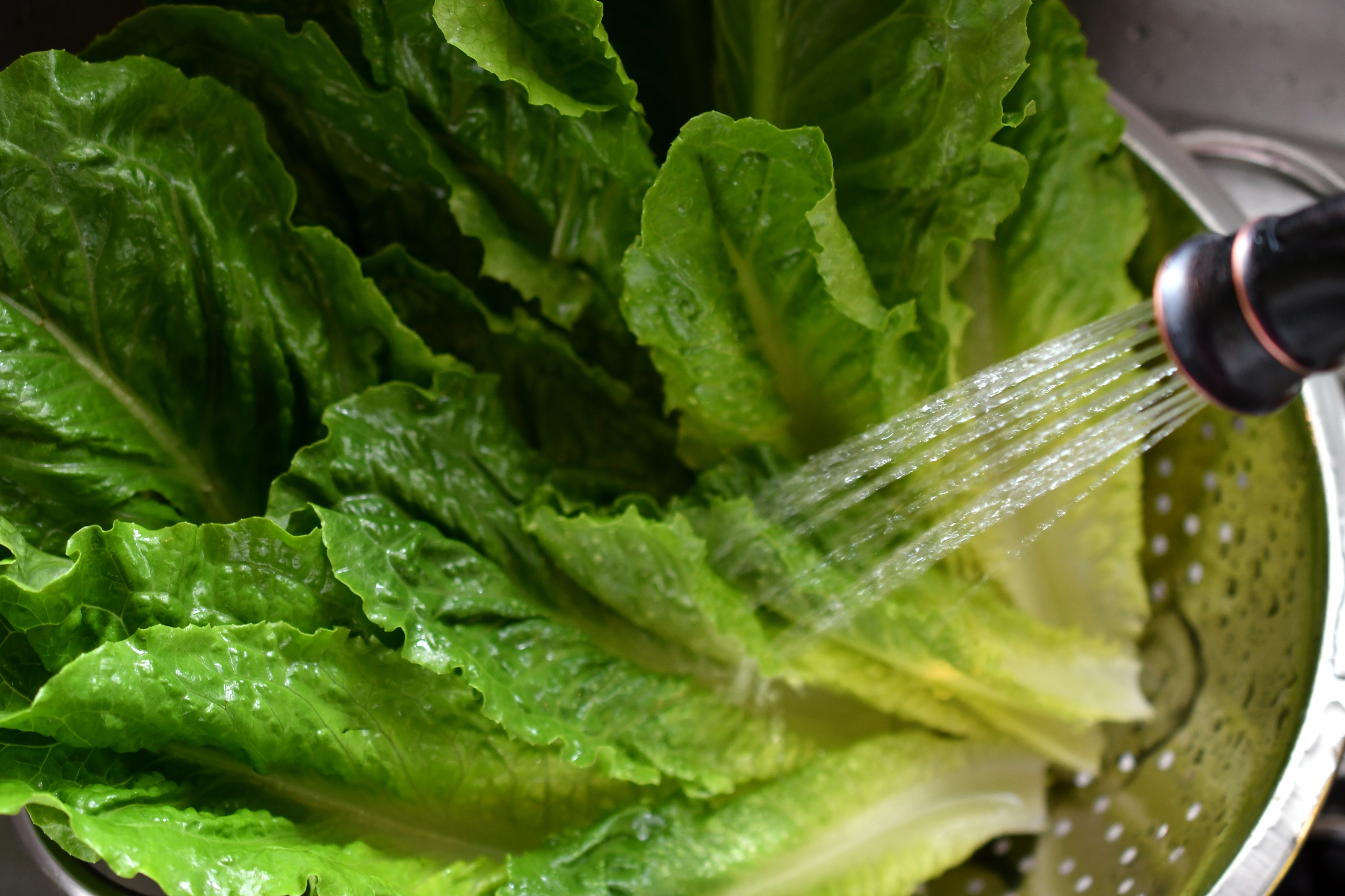
Worried about food poisoning? We’ve got the lowdown.
Ask anyone what causes food poisoning, and the go-to response will probably sound about the same: raw chicken, eggs, undercooked meat, seafood, and shellfish. But what about leafy greens?
Chances are, if you’ve ever worried about food poisoning, then you already know to avoid undercooked animal products. You’ve probably read about problems at some fast-food chains, because the number of people affected can be huge. But as it turns out, some of our most well-known food-poisoning pathogens are just as happy to hitch a ride on a head of lettuce as a hunk of raw meat.
An outbreak of E. coli rocked the salad world this April, when we were first told to avoid romaine lettuce. And according to an article on Vox about the multi-state romaine recall, pre-cut bagged salads are “now one of the most common sources of food poisoning in the US.”
With all this scary news, vegans and meat eaters alike have been left to question: Where does food poisoning really come from? If it’s not just in meat, what is safe to eat? And what can I do to avoid coming down with a case of E. coli?
What is food poisoning?
According to registered dietitian and epidemiologist Suzanne Dixon, there are actually a few different types of food poisoning. The first—which many of us are likely familiar with—is a foodborne infection. “In this case,” Dixon explains, “the microbe infects the person to cause symptoms.” Like a cold or flu virus, the bug slowly multiplies in the body, meaning that it can take as many as three days to six weeks before you have any noticeable symptoms. According to Dixon, examples of common food-caused infections include E. coli, salmonella, and hepatitis A. Fortunately for us, microbes like E. coli and salmonella can both be killed by properly cooking food.
Unfortunately, a food-borne infection isn’t the only way consumers can come down with a nasty case of food poisoning. According to Dixon, a second type of the illness is food intoxication. “With food intoxication,” she explains, “the bacteria itself does not cause the illness. Instead, the bacteria produces toxins as it multiplies in food.” This means that once you’ve eaten a food, it’s not the bacteria itself that make you ill, but the chemicals and toxins that those bacteria release. “In this way,” Dixon notes, “you are quite literally poisoned by the food.”
What are the symptoms of food poisoning?
In most cases, symptoms of food poisoning are pretty straightforward; however, according to the CDC, their severity “may differ depending on what germs you swallowed.” Generally speaking, the most common symptoms include “upset stomach, stomach cramps, nausea, vomiting, diarrhea, and fever.” And while “most people have only mild illness, lasting a few hours to several days,” in some severe cases, hospitalization may be necessary.
“Food poisoning can be very serious,” Dixon explains. And in some cases, it can even lead to kidney failure and death: “People most susceptible to severe symptoms and death are the young (children, toddlers, and infants) and the very old.” Additionally, anyone with a compromised immunity or “other health conditions such as diabetes, heart disease and cancer” can have an increased chance of suffering from serious side effects.
Where does food poisoning come from, and how can you avoid it?
Of course, knowing what symptoms to watch out for is only half the battle. If you truly want to minimize your chances of contamination, you have to know where it comes from. As previously mentioned, most of us know to avoid raw and undercooked meats, but a few other culprits lurking in the cafeteria can make you just as ill. Caramel-dipped apples were recently found to be contaminated, and if you aren’t a scientist who can test the DNA of your dinner, you need to know how to protect yourself.
According to Dixon, there are a few common ways that normally safe foods can become contaminated. “One of the more common problems,” she notes, “arises from foods eaten raw that are contaminated with runoff from cattle feedlots, pig farms, poultry operations, and other facilities associated with producing meat, milk, and eggs.” In other words, if your organic veggies are grown downstream from a pig farm, those lovely tomatoes and cabbages just might be contaminated.
In addition to growing location, food preparation and storage can play a huge role in food safety. Dixon says, “Improper food handling and failure to wash hands and use protective equipment (disposable gloves, for example) can spread microbes from person to food,” which, in turn, may spread to consumers. Dixon also notes that chopping veggies that will be consumed raw with the same cutting board and knife that you use for meat preparation is never a good idea. Finally, foods stored in containers that aren’t properly cleaned and rotated are prime suspects for food poisoning. Basically, if the food is creamy, and it hasn’t been properly refrigerated, steer clear!
Ultimately, whether you’re eating out or preparing food for yourself, your best bet is to take precautions. Be sure to keep raw meats and ready to consume fruits and veggies separated, wash your hands and your veggies, and opt for entrees that have been freshly prepared and properly cooked. And if all else fails, be sure to stay hydrated!



